Turkmen weddings at all times have been distinguished by their scope and solemnity. A wedding is perhaps the main celebration in the life of Turkmens. It takes months to prepare for it, a lot of moral work and material additions are invested in it.
In general, Turkmens are adherents of traditions in arranging celebrations, especially such significant ones as a wedding. Marriage rites absorbed both religious beliefs and ancient folk traditions. Over time, some ancient traditions and rules went into oblivion, as irrelevant or obsolete, modern ones came in their place. Antiquity is intricately combined with new trends, giving rise to a colorful and interesting spectacle - a Turkmen wedding.
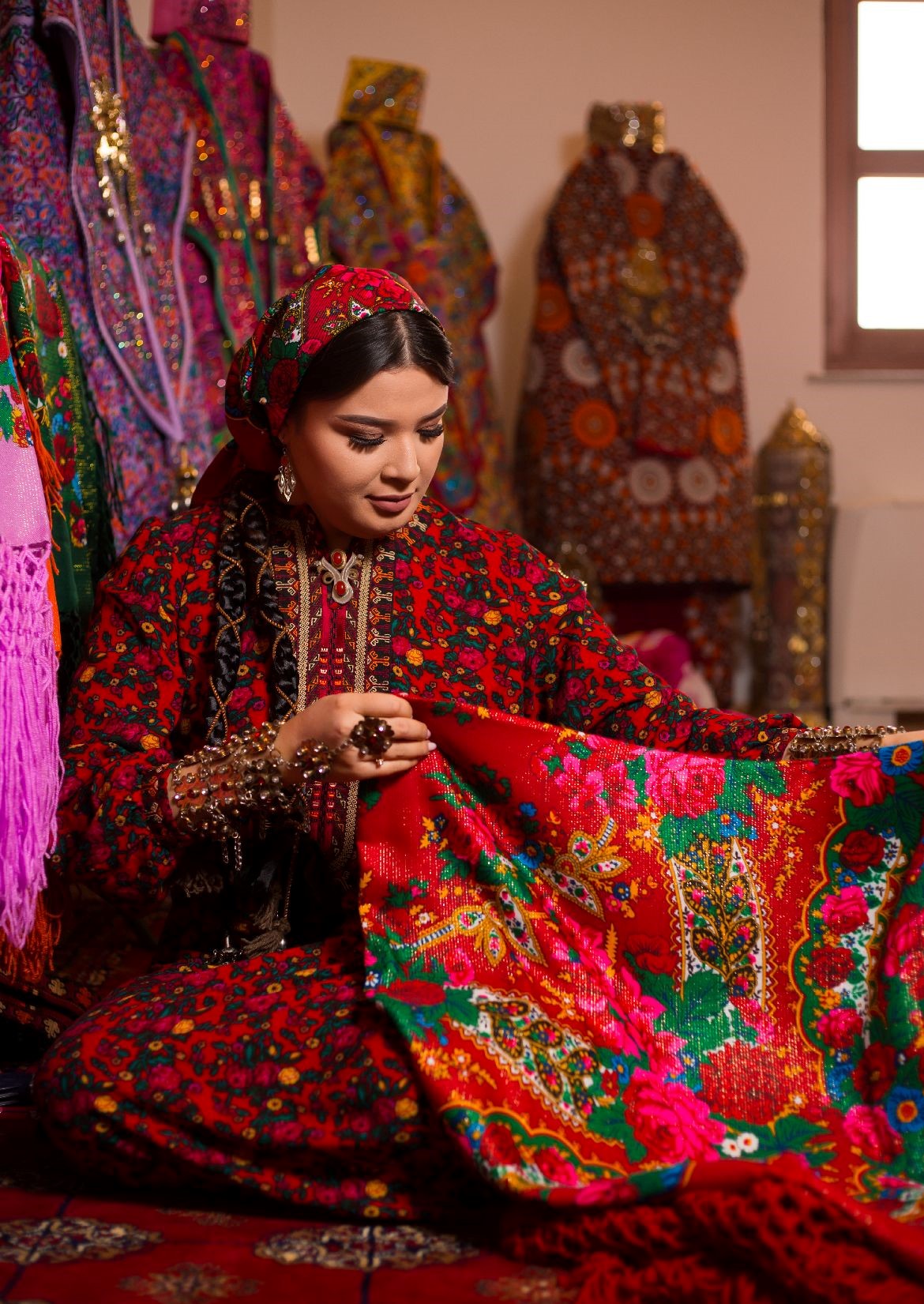
Turkmen wedding celebrations and events last an average of three days, and if all the preliminary ceremonies are observed, then all five. One of the relatively new traditions is the so-called bachelorette party, when the bridesmaids gather at her place, joke, discuss the wedding dress and generally have fun in their own circle.
Nowadays, weddings are held at any time of the year, although in the old days the time for weddings was determined by the calendar of chores. Although a lot still depends on the will of the parents in Turkmenistan, there are no more cases when newlyweds, married by their parents, see each other only on the wedding day. Parents can act as matchmakers, but the decision to marry and consent is always with young people.
Among the wedding traditions that have survived to this day, one can name “at gulak” - the day before the wedding celebration, the groom's mother gives gifts to the bride's relatives. As gifts - cuts of fabric, sweets wrapped in scarves, carpets. According to the rules, the donee must return bundles of scarves filled with equivalent gifts to the donors.

The most interesting and colorful part starts the next day. In the morning, the bride is dressed in a national dress - a red dress made of keteni silk fabric and a richly embroidered robe. Both the robe and the dress are richly decorated with massive silver jewelry. Quite often, however, these wedding decorations are made of copper - they are much lighter than silver ones and are much cheaper. Also, one of the new rules is to rent such jewelry. The national dress of the bride with all the decorations can weigh more than 25 kilograms, and the total weight of a set of all the traditional jewelry of the bride, including braided pendants, bracelets, a “gulyaka” brooch and other things made of silver, could reach 60 kg.
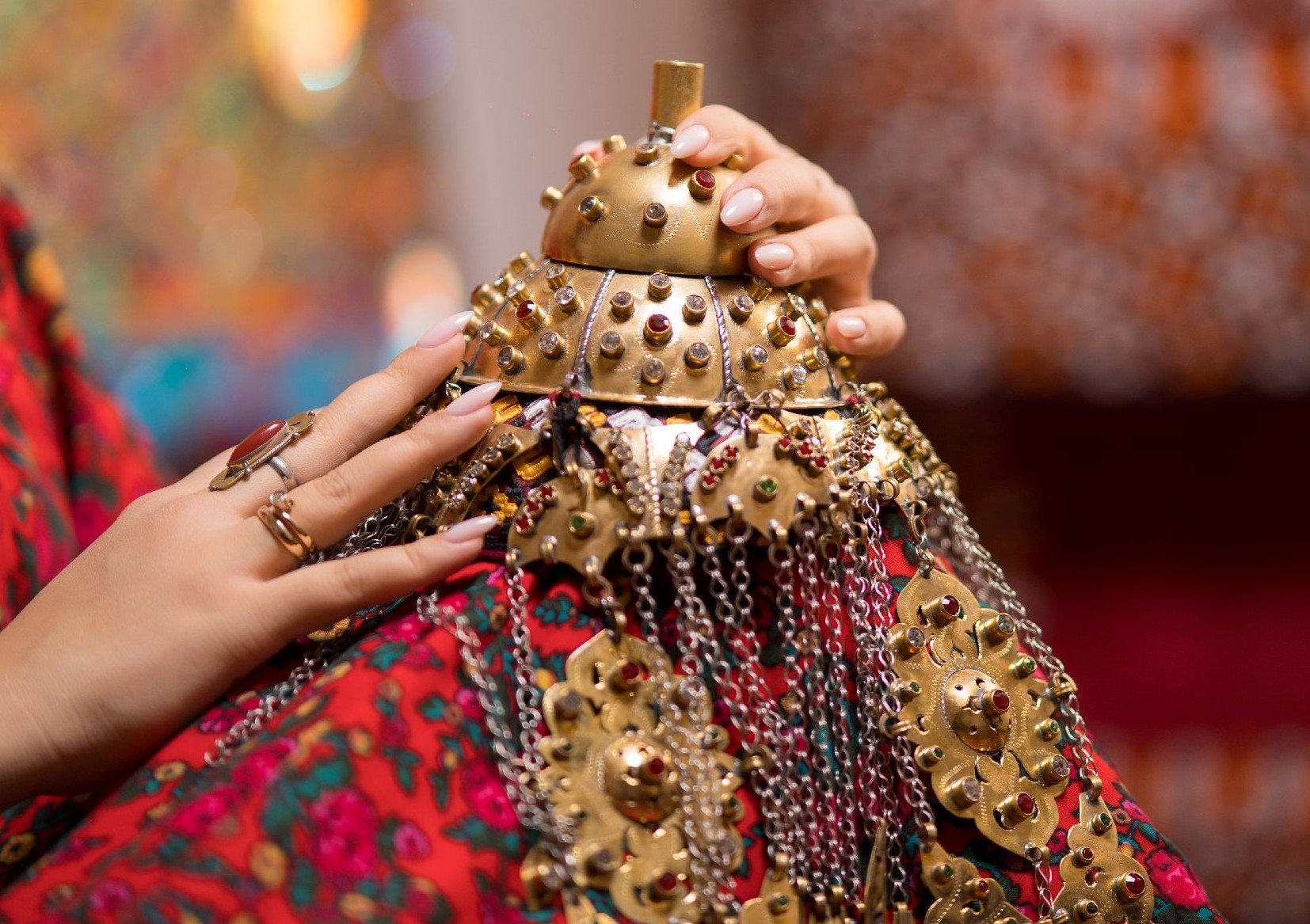
A “gelin kurte” is thrown over the bride's head - a luxurious richly embroidered scarlet robe. It was prescribed to wear this robe for 40 days after the wedding.
In the old days, it was believed that the bride becomes a desirable prey for evil spirits and other evil spirits - hence the custom, in the form of protection from evil forces, completely covers the face and entire figure of the bride.
The cut for the national wedding dress was to be presented by the groom, and it was entrusted to sew it to a respectable woman with many children and only on certain days.
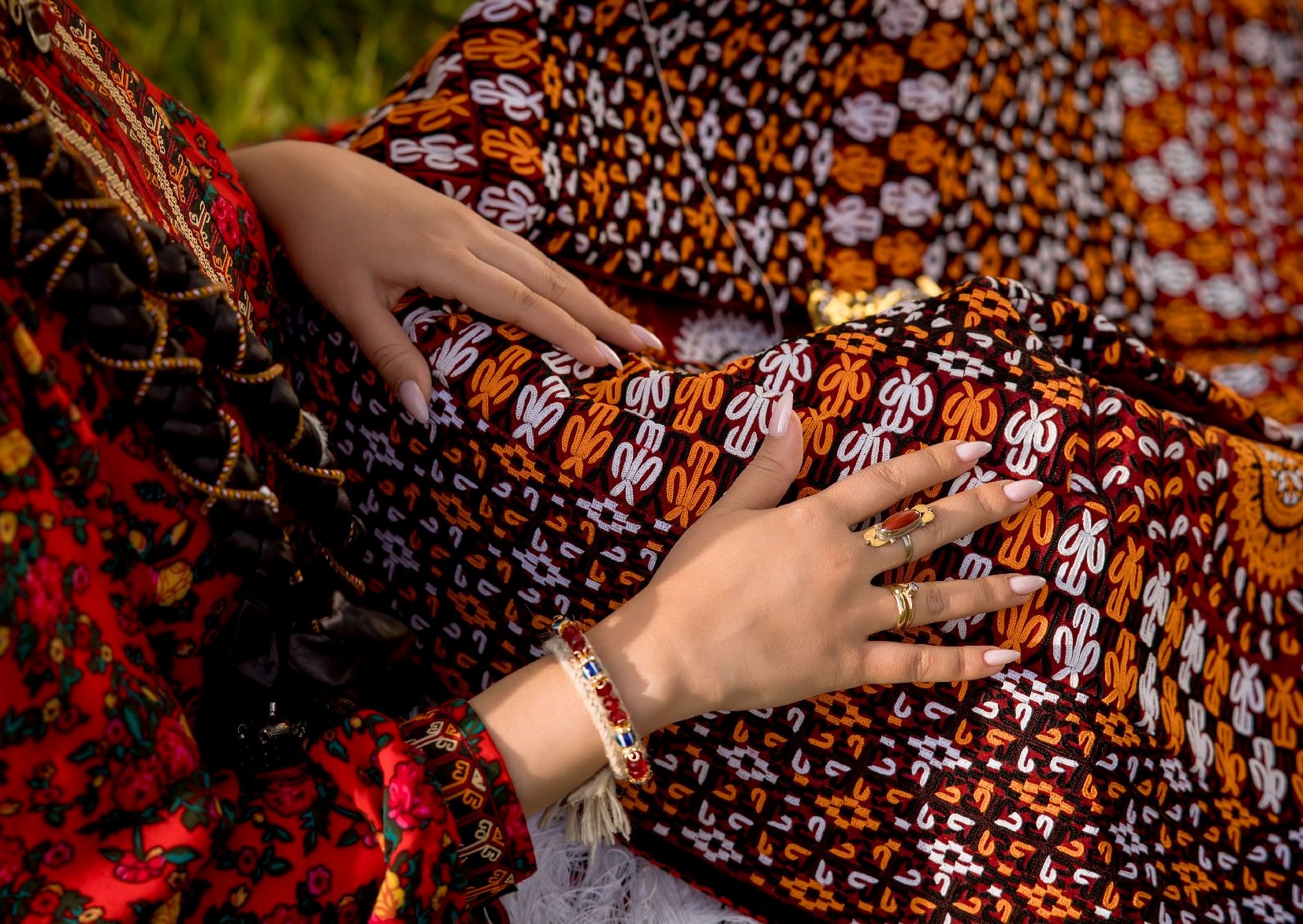
After the bride is completely ready, she symbolically says goodbye to her family and is taken to the groom's house in a richly decorated car. The tradition of decorating the cars of a wedding procession comes from the depths of centuries, when horses were decorated with bright ribbons, cords, bells. Nowadays, the car in which the newlyweds are traveling is most brightly decorated - often the body is covered with red or gold fabric with shiny metal plaques sewn on it. The cars accompanying the “carriage of the young” are decorated with scarves or ribbons.
Before departure, the procedure of a comic ransom of the bride begins - the daughters-in-law try not to give the bride to the groom, and the groom or his friend is forced to give them money.
Traveling around the city and taking pictures in iconic places is also a relatively new tradition that arose already in the XX century.
Upon the bride's arrival at the groom's house, the bride is pelted with sweets to make her life "just as sweet". One of the customs that has survived to our times is “bet achar”, or “opening the face of the bride”. The groom's parents are permitted to look under the kurta and the lace veil that covered the bride's face all this time. “For a look” the bride is given gifts from the groom's parents.
Another popular tradition that has survived to this day is the wish for young people to have children as soon as possible, for which one of the smallest inhabitants of the house is put on the bride’s lap, and other children are given gifts from her. In order for the boy to be the firstborn, alchiks (the heel or talus of a sheep) are sewn into the corners of the blanket from the bride's dowry.
The wedding continues in the evening, from six o'clock. As a rule, this part of the celebrations in our time takes place in a European, modern style - in a restaurant or a banquet hall, with a large number of guests. The bride and groom change into classic wedding attire - a black tuxedo and a white dress with a veil.
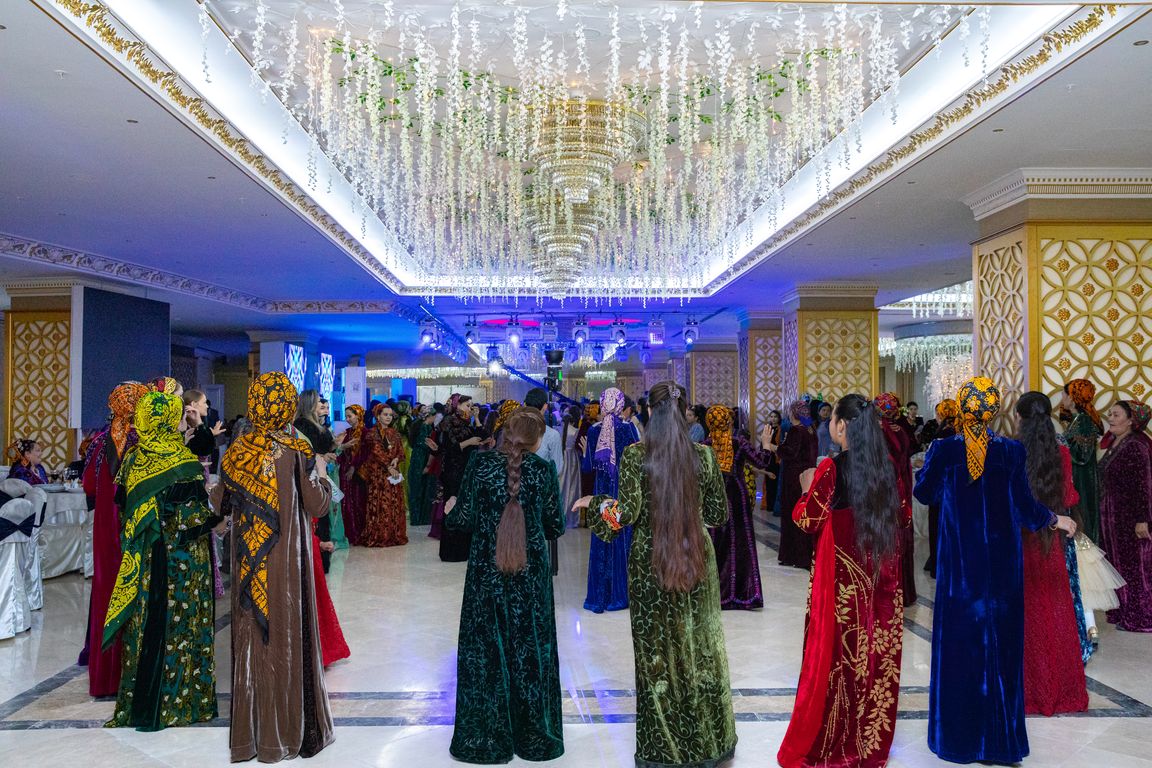
The number of guests can vary from 200-300 people to a thousand. Such a number of guests at a Turkmen wedding is the norm, as is a plentiful table and a lot of loud music and dancing. At a Turkmen wedding, it is also customary for dancing guests to distribute small souvenirs - handkerchiefs, napkins, towels, bags of sweets. Despite the scope, the wedding feast usually ends well before midnight.
The newlyweds leave the feast before the guests. After returning to the groom's house, the turn of traditional wedding ceremonies comes again. The bride and groom again change into national costumes, and the bride's headdress changes to the headdress of a married woman - a small girl's scarf or skullcap-tahya is removed from her and a large colorful scarf is tied, symbolizing her new status. The newly-born wife should keep her girlish scarf in order to later hand it over before the wedding of her own daughter or give her son to the bride.
Semi-joking tests are arranged for the bride. For example, she must untie the tightly tied knot on the groom's sash, and those around her must interfere with her in every possible way with jokes and ridicule. Another test is to pull off the groom's boots, and the shoes for this are chosen tight and narrow. Also, the groom's friends can tear off his collar button, and the bride must immediately sew it back on. All this ends with the fact that the groom jokingly kicks everyone present out of the house with his sash (in the old days, guests could also get a whip).
In the old days, young girls had to make a dowry with their own hands, sometimes relatives or friends helped her. The dowry of the bride necessarily included 1-2 carpets, rugs, a warm blanket, dishes, carpet bags for storing things, as well as smart and casual clothes and a chest. In general, this list, with some amendments to modern life, has survived to this day, although now it is no longer necessary for the bride to prepare a dowry with her own hands.
Despite modern trends and the gradual disappearance of many traditions into the darkness of centuries, the Turkmen wedding is still a bright and memorable event for everyone, with its own special flavor. Oriental splendor and hospitality are combined in it with unique and original rituals, an atmosphere of sincere fun and respect for the traditions of ancestors.
If your family is planning a celebration, then start it by booking a banquet hall.
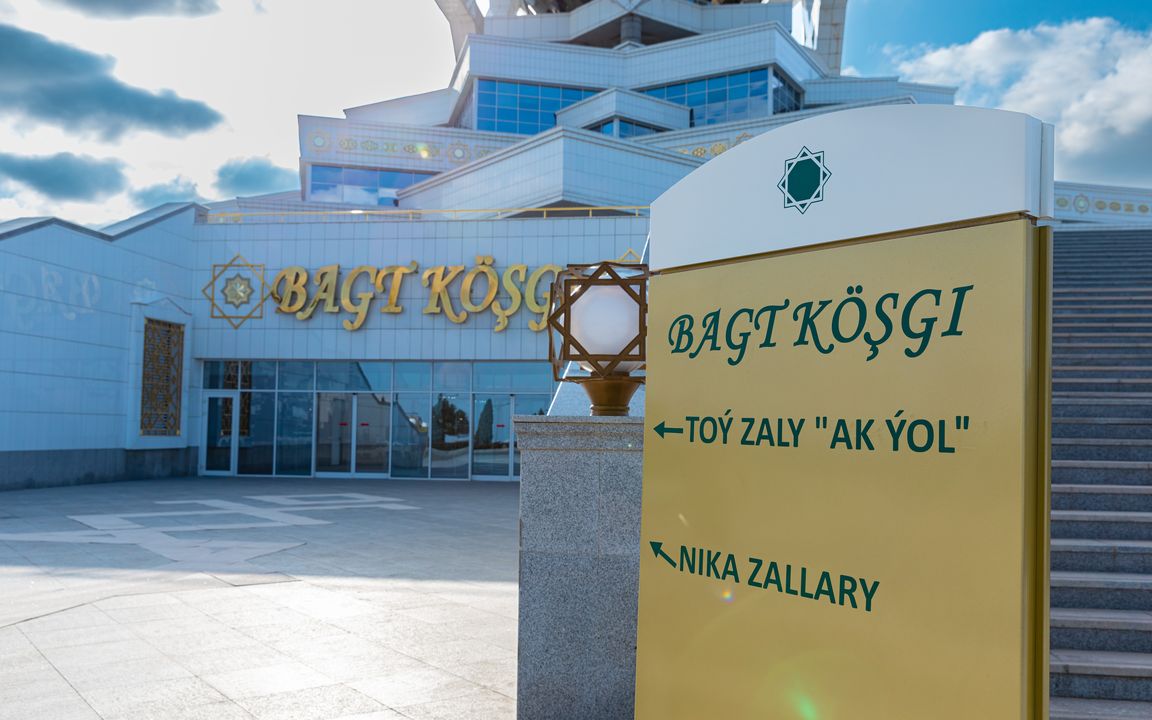
It is better to entrust the organization of a banquet on the occasion of a wedding, anniversary, corporate event and any other holiday to professionals.
Banquet hall Ak Ýol, located in the Ashgabat wedding center Bagt köşgi, is a spacious and beautifully decorated hall with a capacity of up to one thousand people.
Especially for the newlyweds of Turkmenistan, Ak Ýol offers up to 3 years of installments for a wedding banquet, as well as a wide range of free services:
- decoration of the hall;
- light and sound equipment;
- three screens for displaying photos and videos;
- laser show and smoke machine.
In addition, Ak Ýol has a special children's area. The service of animators for banquet customers is free.
Contact information:
- phones: (+993 65) 41 41 40, (+993 60) 13 62 62, (+993 12) 95 06 38;
- page in a social network.
Resources: advantour.com; turkmenistan.gov.tm; turkmenistan.gov.tm
Also read:

